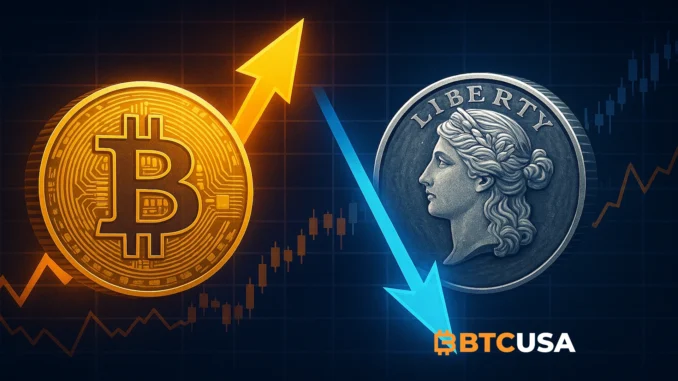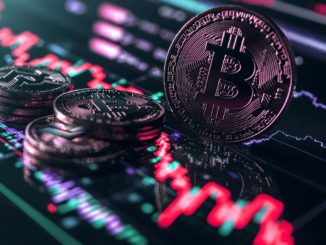
Peter Schiff calls Bitcoin the mirror opposite of silver
Peter Schiff, long-time Bitcoin critic and well-known precious metals advocate, says Bitcoin is currently behaving like the “mirror opposite” of silver. His comments come as the performance gap between the two assets reaches extreme levels.
According to Schiff, silver surged by 16.5 percent in November, while Bitcoin fell by 17.5 percent over the same period. The divergence becomes even sharper when looking at the year-to-date performance: silver is up an impressive 95 percent in 2025, while Bitcoin has declined by around 4 percent.
Schiff warns of a potential reversal for Bitcoin
Schiff argues that if silver continues its strong upward momentum, Bitcoin may face additional downside pressure. He describes Bitcoin as silver’s “inverse reflection,” implying that strength in the metal could correlate with weakness in the crypto market.
His thesis fits into a broader narrative he has pushed for years: that hard commodities outperform speculative digital assets over long cycles, especially during periods of monetary instability.
How the market views this divergence
Analysts in the crypto space largely disagree with Schiff, noting that Bitcoin and silver historically show weak correlation and often trade on completely different macro drivers. Bitcoin is influenced by liquidity cycles, risk appetite and institutional flows, while silver reacts to industrial demand, inflation hedging, and precious-metal rotation.
However, traders acknowledge that the current divergence is unusually wide and could tighten later in the year if macro conditions shift.
What comes next for BTC and silver
Market participants are watching:
– Whether silver continues its parabolic climb
– If Bitcoin remains in a corrective phase
– How global liquidity and interest-rate expectations evolve
– Whether institutional inflows return to crypto


